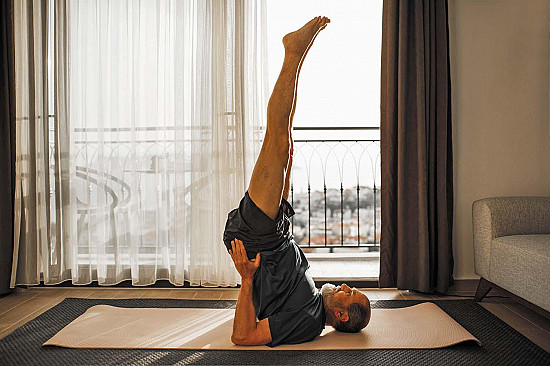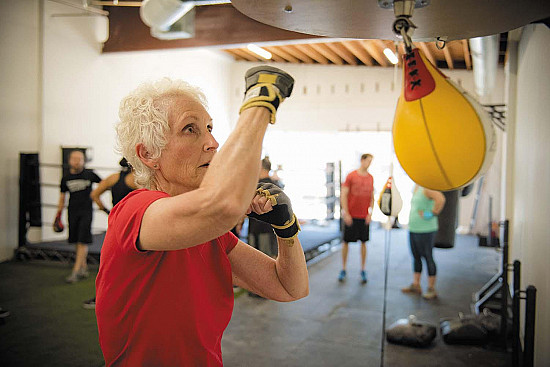Find your exercise fit!
Figuring out the exercise style that best suits your needs will help you stick to a plan.

Image: © iStock
Making a plan to get regular exercise can be challenging. There are many options, and you may not be sure how to narrow them down. "The result may be that you put off exercising," says Madhuri Kale, a physical therapist at Harvard-affiliated Brigham and Women's Hospital.
It helps to know the basic categories of activity you can choose from: exercise classes, gym workouts, home workouts, and vigorous work or recreational activity. Here are some pros and cons to consider for each.
Exercise classes
Examples: step workouts; tai chi; water exercise; aerobics (exercise that gets your heart pumping)
-
Pros: Going to an exercise class works well for people who like getting out of the house, need instruction, and are comfortable in a group. "You get to watch an instructor and learn the right way to do an exercise," says Kale. "The class setting builds a sense of healthy competition. It motivates you to put exercise on your schedule, get dressed, go there, and work out." And it's a great way to meet people and socialize.
-
Cons: A class may be expensive, or it may not be right for people who feel shy or pressured by others, for people with transportation or scheduling challenges, or people who might get bored doing only one kind of exercise. A large class provides fewer chances for individual instruction.
Gym workouts
Examples: Using equipment such as weight machines, treadmills, or stationary bikes; using free weights; working with a trainer; doing exercise that relies on body weight, such as push-ups and lunges
-
Pros: Gym workouts are great for people who like to exercise at their own pace and do several kinds of activities within one workout. You can switch the exercise according to what you want, and you're not bound by a schedule. Many gyms offer complementary trainer services and a workout program tailored to your needs.
-
Cons: "Not every trainer understands the needs and abilities of older adults," says Kale. "That could lead to injury." Plus, gym memberships can be expensive, and you'll need transportation to and from the gym.
Home workouts
Examples: Strength exercises with free weights or resistance bands; stretching and balance routines; yoga; aerobics workouts to a video
-
Pros: Home workouts are a good choice for a self-starter, particularly someone who is willing to keep a log of exercise type and time spent. Exercise any time you like, in any way that you'd like, and mix it up as often as you want. There's no strict schedule, no peer pressure, and no transportation issues or class fees.
-
Cons: "Compliance can be challenging," says Kale. "A lot of my clients tell me it's hard to be motivated to exercise." Or you may not know if you're exercising enough or overdoing it. In addition, there's no way to check that you're doing an exercise correctly, which could lead to injury.
Vigorous activity
Examples: Bike riding, yard work, walking, playing tennis, playing with children
-
Pros: This works well for people who don't enjoy structured exercise. You get to choose the activity. "Almost anything that you can sustain for 20 minutes or more, that gets you to break a sweat, can qualify," says Kale. She suggests that you choose something you love and make it fun.
-
Cons: It's harder to keep track of how much you're exercising. You may not get enough variation—for instance, neglecting balance, strength training, or aerobic activity. "You might be squatting while gardening, but it may not work the right muscles or upper body, or give you a cardio workout," says Kale. "Or you may be carrying objects, working your shoulders but not your legs."
Finding your fit
Kale suggests that you discuss your needs and options with a professional—such as a doctor, trainer, or a physical therapist—for a little insight. Talk to friends about the exercises they enjoy; you might even tag along with a friend for a workout (with your doctor's okay first). Think about whether you like to exercise alone, in a group, or with a friend.
And remember to get all four types of necessary exercise in the program you select—aerobic, strengthening, stretching, and balance exercises. You can always mix up your regimen and the types of activity you do. "That keeps boredom away, and it challenges your muscles, balance, and cardiovascular system," points out Kale.
Disclaimer:
As a service to our readers, Harvard Health Publishing provides access to our library of archived content. Please note the date of last review or update on all articles.
No content on this site, regardless of date, should ever be used as a substitute for direct medical advice from your doctor or other qualified clinician.















